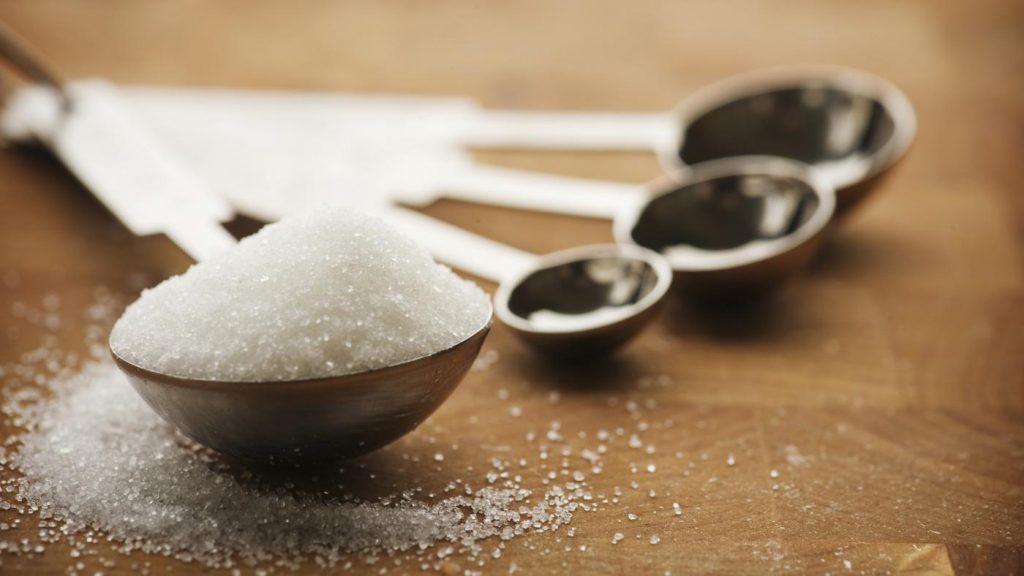
Oil
While most people are trying to cut sugar, added oil has a much larger effect on weight gain. We usually don’t notice it when poured onto a pan in stir fries, or drizzled on salads. It’s really dense, and while baked vs fried potatoes may appear like the same amount of food visually, anything fried is usually more than double the calories!
Fat has 9 calories per gram while carbs (sugar is a pure carb) has 4 grams. So, if you’re choosing what to cut in a recipe – keep that in mind.
one 13 g table spoon of oil has 120 calories!! Same as one medium sweet potato! Whereas sugar has only 48 calories. That’s 2.5 times the difference!
So what can you replace oil / fats with!?
- Apple pure / pumpkin pure. If you don’t mine steaming/ baking a zucchini beforehand, that’s the lowest calorie option.
- baking box brownies + a can of drained beans is all you need for amazing tasting treat + fiber! No oil + eggs needed.
- A can of zero calorie soda + box of cake mix is a thing too. Don’t take my word for it, try it! Use muffin liners because this batter will stick to your pan. Makes a fluffy dessert with a million flavor variation options! Ever had a chocolate cherry coca cola cake??
- Replace eggs with flax / chia seed meal if you’d like to veganize the dish or make it a tad less fatty
- Don’t forget to reduce temperature by 25 deg and bake your bread / dessert 10 min longer after you’ve replaced oil so you don’t burn it!
- Instead of whole nuts, use sliced nuts to top the bread.
- Get a nonstick pan or a silicone baking sheet.
- I personally hate greasy cupcake frostings, but if that’s your game – mix something like Walden Farms pancake zero calorie syrup with some silken tofu and see if that does the trick.
- Replace butter with vegan coconut yogurt, or coconut milk/ cream.

Sugar
Sugar actually only has 48 calories per table spoon, which is about 12.5 g carbs.
- If you replace sugar completely with stevia, that may affect taste and texture and have a metallic after taste. However! If you cut sugar half and half with stevia, that usually flies. Or try 1/3 sugar, 1/3 monkfruit sweetener, 1/3 stevia. Monkfruit sweetener also comes in more sugar-like granular form and doesn’t have a significant aftertaste.
- In smoothies – a frozen zucchini instead of a banana gives the same creamy consistency.
- I’d say replacing sugar with agave or honey or dried fruit is pointless from a nutritional point of view. They all are calorie dense products spiking your insulin. Don’t overpay for those hipster “no sugar added” desserts made of dates and peanut butter…
Flour
- Whole wheat flour has similar nutrition to white flour yet it’s much denser. From my experience, figuring out how to replace flour to reduce calories yet keep the texture is almost impossible. What you CAN do though is – replace the white flour with other flours for a gluten intolerant friend / folks with other allergies.
- I typically use a mix of flours and throw some vital wheat gluten in there to bump up the protein content of the recipe. Like for these banana
- muffins. Be careful adding more – it makes the dough much denser!
- While cocoa powder is quite dense and carby, you only need a spoon or two to make dessert taste like chocolate.
- Cut add-ins like chocolate chips, raisins, dried fruits and candy bits by half 🙂 Order unsweetened dried fruit online in bulk (I haven’t been able to find unsweetened craisins anywhere… have you!?)
Animal Products
Animal products are usually high in fats, cholesterol, and are quite calorie dense. While some plant based options may have less protein, they also have A LOT less (or no) fat and could be a filling satisfying alternative.
If the thought of cooking everything vegan freaks you out, try to replace one ingredient in your cooking – say, eggs or butter or milk. When you learn how to do that – move to the next. Before you know it – most of the things in your kitchen will be plant based!
There is an argument that plants are incomplete proteins. I’d encourage you to read this article to learn why that’s not the case: https://medium.com/tenderlymag/busting-the-myth-of-incomplete-plant-based-proteins-960428e7e91e
Even if your opinion doesn’t change – all nutrition schools and certifications agree that in combination plants offer a complete protein palette (like rice and beans).
